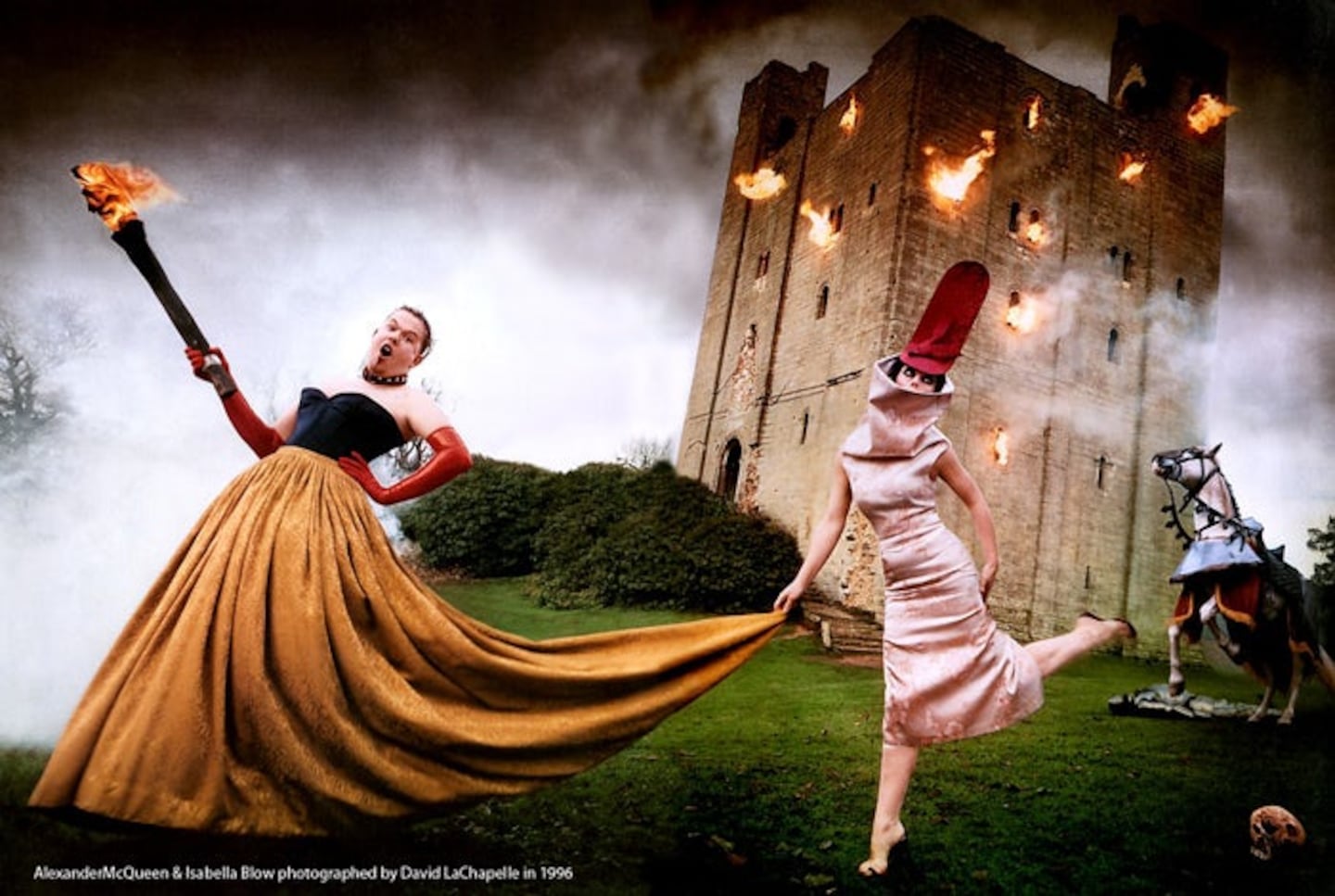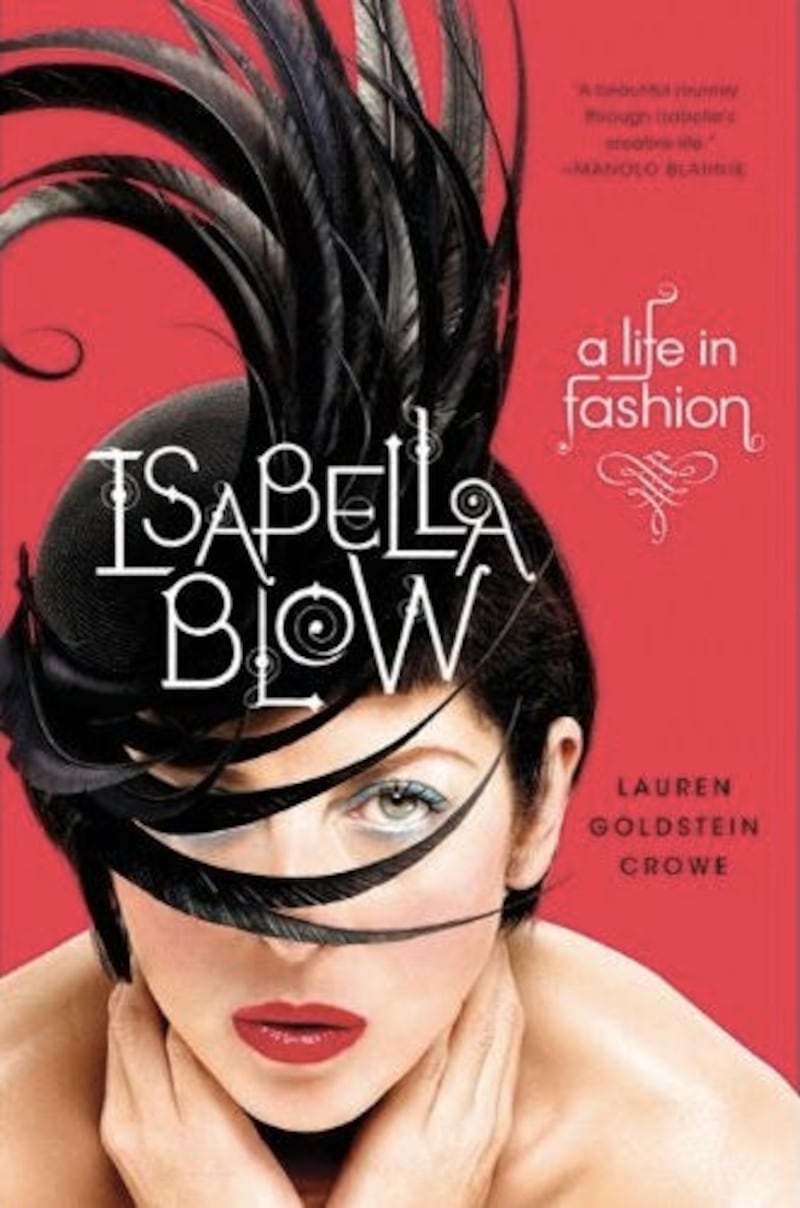
The Business of Fashion
Agenda-setting intelligence, analysis and advice for the global fashion community.

Agenda-setting intelligence, analysis and advice for the global fashion community.

The brilliantly eccentric, beautiful and iconic Isabella Blow lived fashion like no other. In the wake of her tragic suicide in 2007, she has inspired a film, a play and two books, including Isabella Blow: A Life in Fashion, a biography by friend of BoF Lauren Goldstein Crowe that’s to be released early next week. Today, in the first of a two part series, we bring you an exclusive excerpt from the book’s Afterword in which Ms. Goldstein Crowe asks the question: Did fashion kill Isabella Blow?
LONDON, United Kingdom — When I began the research for Isabella Blow: A Life in Fashion, I was surprised to find that many in the fashion world viewed her suicide not as a tragedy but as a whodunit. Everyone had a theory. Some thought it was the fault of her employer Condé Nast or her husband Detmar for not supporting her enough when she became ill. Some thought it was the fault of Alexander McQueen for not giving her a job when he got posted at Givenchy. Some thought it was Sheikh Majed al-Sabah's fault for disappointing her on a project he'd retained her to do. Many others blamed her mother, her step-mother or her father. As the daughter of a psychologist, all these theories seemed equally absurd to me.
But as strange as those theories were, the one that came from outside fashion was even stranger. Many members of the press decided another group was to blame: the fashion industry. That's right, all of us. Here, in a BoF exclusive two-part excerpt from the Afterword of my book, I do the unconscionable. I defend fashion.

Isabella Blow - A Life in Fashion | Source: Thomas Dunne
ADVERTISEMENT
---
In the wake of Isabella's death newspaper columnists in the UK said with staggering authority that fashion was largely to blame for her demise. "The sense is strong that the death of the fashion stylist Isabella Blow is just another of those frequent glimpses beyond the surface of the fashion industry into something pretty dark," said Deborah Orr in the Independent. "How vile the fashion industry is," declared India Knight in the Times. "Fashion eats people up and spits them out in a way that sends shivers down your spine: no wonder so many of its former stars end up unhinged." The consensus seemed to be that fashion doesn't do enough to look after its own when things get tough. As evidence, Knight pointed to the work Isabella did to promote Alexander McQueen. "Fast forward, and McQueen is a global brand, a squillionaire, and Blow is, well, dead," she wrote.
Fast forward even more, to February 2010, and Alexander McQueen is, well, also dead, and also by his own hand. Isabella’s death had impacted McQueen greatly. The pain he felt showed clearly on his face at her funeral. Did he feel responsible, the way that people in the industry were implying he should? Perhaps. Shortly afterward he and his close friend, the jewelry designer Shaun Leane, went to India for a month. It was the longest that McQueen had ever been away from home.
Later, after his Fall/Winter 2008 show, which was inspired by his trip and entitled The Girl Who Lived in the Tree, he told a journalist that the trip had been a "pilgrimage" — he had embraced Buddhist culture as a way to heal his pain. And, he said, it had worked. He came back refreshed and renewed, and adamant that neither he — nor the industry in which he toiled — was responsible for Isabella's death.
The show told the rags-to-riches story of a girl who lived a life of sadness inside a tree until she found true love and emerged from the shadow of the tree into light and love. The first half featured models in tight black suits and short dresses with flared skirts and petticoats that W magazine called "Victorian Goth ballerinas," as well as long, hooded knit dresses with sparkling snowflakes on the side. In the second half of the show, the girls were wearing Gem Palace jewels, embroidered military jackets over draped chiffon skirts, white tights, and silk prints featuring images of Britannia. W said, "That both of these characters should move into the light is not an accident; they're merely manifesting the mood of the designer who, after an extended dark period, both personally and professionally, has embraced the light."
McQueen's next show was an even more direct account of his feelings for Isabella. La Dame Bleue was a sort of greatest hits number, with special attention paid to the pieces Isabella loved most. As the models walked the runway, behind them stood a giant metal light encrusted sculpture of a flapping creature — an Icarus. The reference to the Greek myth, which recounts the story of the boy who flew to close to the sun, was not lost on many.
At the time of the W interview in June of 2008, the first time McQueen had spoken about her death to the press, he insisted that Isabella's passing gave him reason to live. "I learned a lot from her death," he said. "I learned a lot about myself. [I learned] that life is worth living. Because I'm just fighting against it, fighting against the establishment. She loved fashion, and I love fashion, and I was just in denial."
The following year, in September 2009, he defended fashion again — this time from Isabella herself — in an interview with the The New York Times. "She [Isabella] would say that fashion killed her, but she also allowed that to happen in a lot of ways. She got herself some good jobs and she let some of them go. You could sit Isabella down and tell her what she should do with her life. But she would never understand that all it came down to [was] 'You just are, Isabella. And that is your commodity.'"
ADVERTISEMENT
Despite his stated optimism about what he had learned from Isabella's death, in the early hours of February 11, 2010, Alexander McQueen locked himself in his Mayfair apartment and, after taking what the coroner called a "substantial" amount of cocaine and sleeping pills and first trying to slit his wrists, he hung himself in his wardrobe with his favorite brown leather belt. At his inquest, his doctor — the same one Isabella had been seeing when she died — said that McQueen had previously tried to overdose twice, in May and in July of 2009. On the back of a catalog of images found in his bedroom called The Descent of Man by the artist Wolfe von Lenkiewicz, McQueen had written: "Please look after my dogs. Sorry, I love you. Lee. P.S. Bury me in the church."
It was just part of the full note, which has never been released. People close to him said that he was despondent over the death of his mother earlier that year following a prolonged illness and had been trying to steel himself for her funeral the next day. Sam Gainsbury, who produced many of his shows, said, “I think Lee got to a really dark place and could not get out of it. It was in that instance on that night. On another day maybe he would have gone to sleep and gotten out of it.” David LaChapelle is fairly convinced that McQueen had been waiting until after his mother had died to do something he had long thought about but that he knew would destroy her.
The pundits, meanwhile, said the predictable: The problem was fashion. "The fashion industry that he [McQueen] dominated is one of the least attractive legal activities on earth, populated by weirdo artists, freakish PRs and emaciated and mentally disordered models… It is a disgusting place to make a living," said George Pitcher in the Telegraph.
Did toiling in fashion kill Isabella and Alexander? Of course not. According to a 2008 article in the Royal British Journal of Psychology, “Patterns of Suicide by Occupation in England and Wales: 2001-2005,” the odds of committing suicide by trade are much higher for health professionals, agricultural workers, and (for women) secretaries. It’s just that workers in those trades don’t make the headlines much — even when they’re not killing themselves.
Tomorrow, in part two, we look at whether the allegations that fashion killed Isabella Blow actually point to an industry-wide image problem.
Lauren Goldstein Crowe is the author of The Towering World of Jimmy Choo (Bloomsbury) and Isabella Blow: A Life in Fashion (St. Martin’s Press) and a former Senior Writer at Time Magazine.
From analysis of the global fashion and beauty industries to career and personal advice, BoF’s founder and CEO, Imran Amed, will be answering your questions on Sunday, February 18, 2024 during London Fashion Week.
The State of Fashion 2024 breaks down the 10 themes that will define the industry in the year ahead.
Imran Amed reviews the most important fashion stories of the year and shares his predictions on what this means for the industry in 2024.
After three days of inspiring talks, guests closed out BoF’s gathering for big thinkers with a black tie gala followed by an intimate performance from Rita Ora — guest starring Billy Porter.